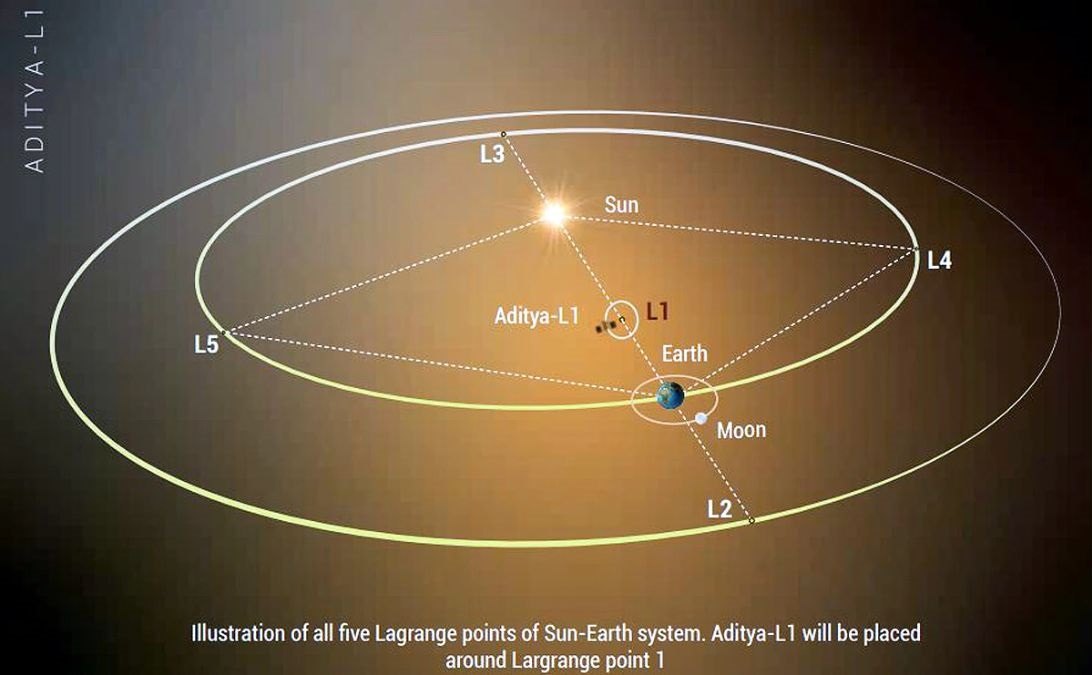The Aditya L1 is India’s first solar mission by the Indian Space Research Organisation (ISRO). It is scheduled to be launched on September 2, 2023 at 11.50 am IST. Aditya L1 is the first Indian space-based observatory-class solar mission which marks a major milestone for India's space program. Dr. Sankarasubramanian K., ISRO, has been designated as the Principal Scientist of the Aditya-L1 mission.
On August 30, ISRO informed that the launch rehearsal and internal checks of the Aditya L1 spacecraft have been completed. In another tweet, ISRO announced, “The 23-hour 40-minute countdown leading to the launch at 11:50 Hrs. IST on September 2, 2023, has commended today at 12:10 Hrs.”
PSLV-C57/Aditya-L1 Mission:
— ISRO (@isro) September 1, 2023
The 23-hour 40-minute countdown leading to the launch at 11:50 Hrs. IST on September 2, 2023, has commended today at 12:10 Hrs.
The launch can be watched LIVE
on ISRO Website https://t.co/osrHMk7MZL
Facebook https://t.co/zugXQAYy1y
YouTube…
Aditya-L1 spacecraft is scheduled to be launched by the Polar Satellite Launch Vehicle (PSLV). It will be placed in a halo orbit around the Lagrangian point (L1) of the Sun-Earth system, which is about 1.5 million km from the Earth and about 4 times farther than the Moon. The total travel time of Aditya L1 is expected to be 4 months.
Before we learn which layer of the Sun will Aditya L1 study, let us understand what is Lagrange point L1.
What is Lagrange point L1?
For two-body gravitational systems, there are a total of five Lagrange points denoted as L1, L2, L3, L4 and L5. Technically at Lagrange point, the gravitational pull of the two large bodies equals the necessary centripetal force required for a small object to move with them. The Lagrange point L1 lies between the Sun-Earth line. (See image below)
 Image: ISRO
Image: ISRO
A satellite placed in the halo orbit around the L1 point has the major advantage of continuously viewing the Sun without any occultation/ eclipse. Using the special vantage point of L1, four payloads directly view the Sun and the remaining three payloads carry out in-situ studies of particles and fields at the Lagrange point L1.
Also read: What is Aditya L1? All You Need To Know About India’s First Solar Mission
Which layer of Sun will Aditya L1 study?
The Aditya L1 spacecraft carries seven payloads to observe the photosphere (the deepest layer of the Sun that we can observe directly), chromosphere (the layer above the photosphere), and the corona (outermost layer) using electromagnetic and particle detectors.
These payloads will measure the corona's temperature, density, composition, and dynamics. They will also study the interaction between the corona and the solar wind, which is a stream of charged particles that flows out from the Sun.
 Image: ISRO
Image: ISRO
Of the seven scientific payloads, VELC is the prime payload onboard Aditya-L1.
Visible Emission Line Coronagraph (VELC) will study the solar corona and dynamics of Coronal Mass Ejections. It will also send 1,440 images per day to the ground station for analysis on reaching the intended orbit.
Solar Ultra-violet Imaging Telescope (SUIT) payload will aid in imaging the Solar Photosphere and Chromosphere in near Ultraviolet (UV) and also measure the solar irradiance variations in near UV.
| Did you know? The Sun's outer atmosphere, the corona, is much hotter than the surface of the Sun (photosphere). The surface of the Sun is about 5,500 degrees Celsius (9,940 degrees Fahrenheit), while the corona is about 1 million degrees Celsius (18 million degrees Fahrenheit). |
The Aditya L1 payloads are expected to provide the most crucial information to understand the problems of coronal heating, Coronal Mass Ejection, pre-flare and flare activities, and their characteristics, dynamics of space weather, a study of the propagation of particles, fields in the interplanetary medium, etc.
Comments
All Comments (0)
Join the conversation